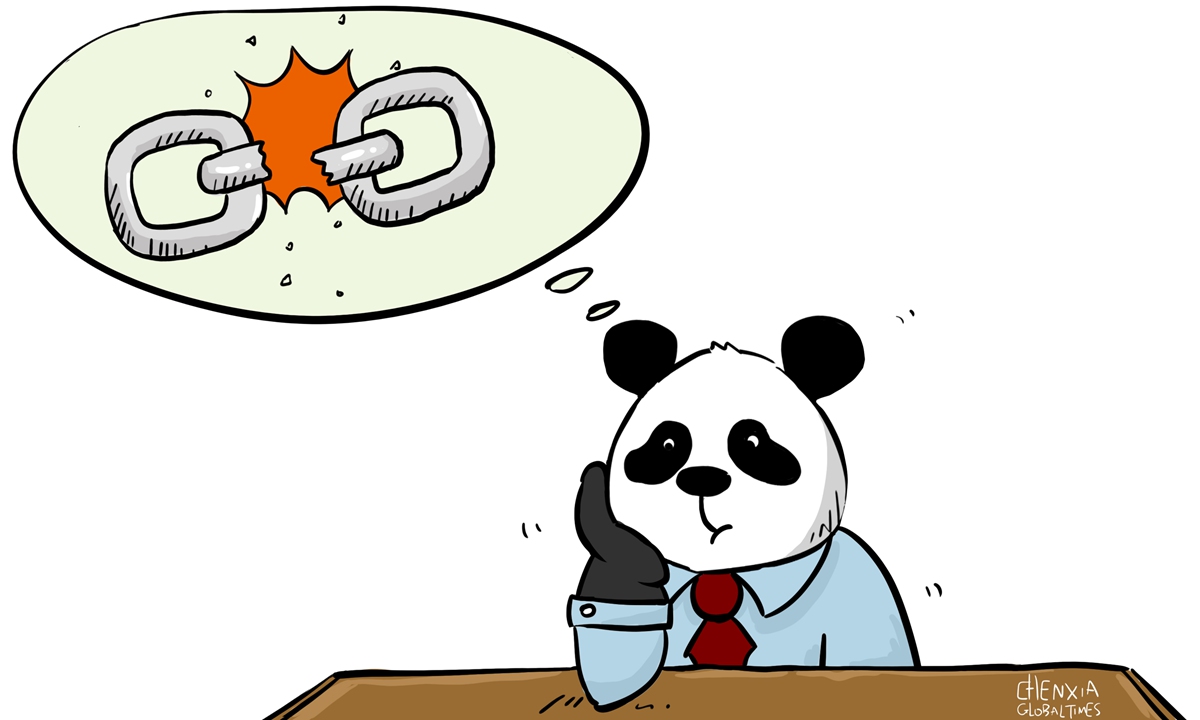Beijing ponders measures to offset US ‘decoupling’ attempt
By Li Hong Source: Global Times Published: 2020/9/6 16:36:56

Illustration: Chen Xia/GT
With China's per-capita GDP rising to $10,400 in 2019 and the US government doing its utmost to harass and contain China's progress, Beijing is to reorient its economic policies by developing its domestic market, while enhancing trade and economic partnership with friendly countries and regions.
It is the Trump administration, which launched a relentless trade and technology war with China in 2018, that has given Beijing this wake-up call, inducing top policymakers to recalibrate the paradigm of growth.
For many years, China has continued to learn and buy technology-intensive products from developed countries. Now, this country wants to change that format, to become self-sufficient in manufacturing and export the world's most advanced high-tech products and services.
Predictably, Beijing will invest exponentially in new technologies and talent from 2021 to 2025, or the 14th Five-Year Plan period, so that China will stand among the front-runners of major economies that lead in technological innovation.
The move to strengthen the domestic economy - which some economists have dubbed "internal circulation" - is predicated on the fact that China has already evolved into a predominant, un-ignorable market force that can support the country's enterprises to invest heavily in tech research and development, with that sizable investment rewarded by China's giant market.
Here are two examples of China's huge market supporting technology investment. China's state railway system once invested tens of billions of dollars in creating the world's most advanced bullet trains, now the country has over 30,000-km of high-speed railways connecting more than 460 Chinese cities. Huawei invested immensely in its innovative and world-leading 5G technology, and China's domestic market size is now large enough to provide those investment returns despite the US government's attacks.
Some foreign analysts question China's plan to ensure 70 percent of semiconductor microchips are domestically supplied by 2025. They doubt China's "Made in China 2025" capability. As a matter of fact, Chinese tech companies such as the private Sanan Optoelectronics and state-owned China Electronics Technology Group Corporation have made inroads in third-generation semiconductors, which can operate at high frequency and in higher power and temperature environments.
When China's domestic market demand for semiconductors is met at home, more than $300 billion will be saved each year, which demonstrates why this country needs to pivot to "internal circulation."
The vigorous pursuit of new technologies, plus China's huge market size, will effectively help the country to blunt the reckless and ill-willed attack by the Trump government, in addition to setting up a global economic and tech innovation center, rivaling that of the US.
Once "internal circulation" is set up in China, people can anticipate its prowess in uplifting Chinese manufacturers' value chains, while at the same time subduing their overseas counterparts.
However, China's emphasis on "internal circulation" does not mean it will give up on "external circulation," as the two prongs will support and complement one another. The country is set to continue its opening-up policy and not to discriminate or clamp down on foreign investment and trade. The "dual circulation" development strategy is very likely to be the guiding economic policy of the coming 5-10 years.
For many years, the country has been trying to rebalance the economy towards consumption-driven growth from promoting exports. In 2019, China's total exports and imports accounted for about 31 percent of its GDP, down from a peak of 64 percent in 2006.
In implementing the "external circulation" policy, Beijing, increasingly confident of its market power, will take the initiative to turn its back on all unfriendly economies. Closer economic partnerships will be formed along the Belt and Road Initiative, particularly with the economies of the EU, Asia and Africa.
In the face of the ongoing COVID-19 pandemic, rising global instability and broad and deep economic contractions, China needs to depend on its huge domestic market to seek strength, and firmly shore up that strength by investing in tech innovations and talent.
As the Trump administration has embarked on its bid to "decouple" the US from China, Beijing should be resolute to take its own destiny in its own hands.
A future division of technological standards seems possible, but China's tech leaders - the like of Huawei, Alibaba, Tencent, Xiaomi, Sanan Optoelectronics, CATL batteries, Hualong-1 nuclear reactors, etc.- should be well prepared for the change, to ensure their technologies are advanced, potent to drive the continuous growth of China and friendly economies.
The author is an editor with the Global Times. bizopinion@globaltimes.com.cn
Posted in: COLUMNISTS,CHINA-US